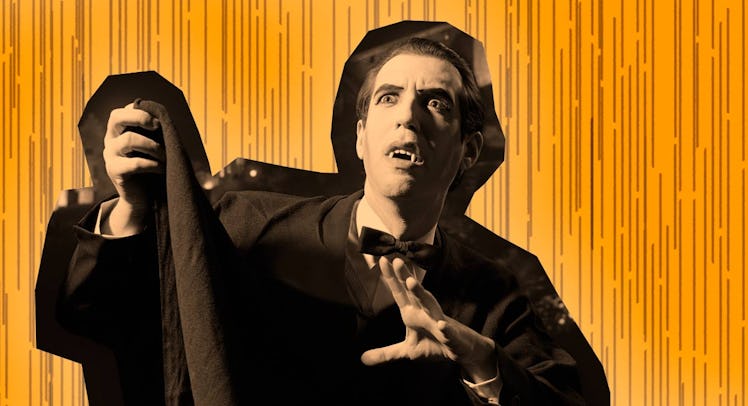How to Talk to Kids About Halloween Monsters
Dracula and Frankenstein’s monster might be colorful cartoons, but some kids still understand them as symbols of death and violence.

Dracula is a smiling, candy-colored cartoon in the aisle of a superstore in early October, but come the end of the month he’s an undead menace. Kids don’t know from Bela Lugosi or Bram Stoker, so there’s the gore and the guy on the cereal box. They are more likely to be concerned about the former than the latter. The problem isn’t the fangs, it’s that young kids genuinely don’t know the Count isn’t real. So for parents with kids frightened by him and his Halloween pals, the rule is to tread carefully through the styrofoam graveyards; validating fears, offering context, and coughing up comfort like blood.
“It’s okay for children to be frightened of vampires and frightened of violence. In a way, it can show a true sensitivity to life,” explains Dr. Susan Linn, research associate at Boston Children’s Hospital and author of The Case for Make Believe. She notes that living with that sensitivity isn’t easy, but people who do often become truly extraordinary. Creativity and the ability to suspend disbelief is, after all, a good thing in many cases.
“I think it’s important to honor belief and to let children know everyone is afraid of something,” Linn explains. She stresses that “everyone” should explicitly include parents too. It’s time to tell the kid what frightens you. But, Linn cautions, be careful not to give kids a new reason for concern. It’s best to say that you’re afraid of something and then immediately explain that it isn’t real. (Making it up is fine. Nothing wrong with a kind lie.)
Fortunately for parents, kids often start the Halloween spook conversation by asking relatively simple questions like, “Are werewolves real?” It’s important to recognize that these questions represent an opportunity for conversation, not flat dismissal. To that end, parents can ask where the question is coming from in order to create a dialogue about the underlying fear. Obviously, the right answer is, “No,” but that’s not true when it comes to kids.
That said, a talk will only go so far with the youngest kids. “You can talk to 2-year-olds and 3-year-olds about the differences between reality, fantasy, and make-believe,” Linn says. “But the younger toddlers and preschoolers are developmentally going to have a hard time sorting that out.”
And Linn knows from make-believe. As a puppeteer pioneering the use of puppets in psychotherapy, she was a regular visitor to Mr. Roger’s Neighborhood of Make-Believe. Her long experience with imagination has helped her understand a key to unlocking kid fears. “One of the things to remember is that children often conquer their fears, and gain some control over them, in games of creative play,” Linn says. “Parents can join in with play, reversing some roles by offering themselves up as sacrificial victims to any number of their kid’s imaginative beasties. Children often play monster, where they are the ones who get to frighten people. Giving your children lots of opportunities for free and dramatic play is a really good way to work through their fears.”
If that play includes some puppets or a teddy bear or some other avatar, so much the better. It’s good to have a foil even if that foil is just a hand in a sock trying to come to terms with its fear of vampiric hands in socks.
“You can try having your puppet be afraid of Halloween and work with your child to come up with solutions,” Linn says. “See if your child can solve that for the puppet.” But Linn warns parents should not attribute the child’s responses to the puppet to the way the kid actually feels. The important part is that parents and kids build a story together.
But, in the end, there’s one thing a kid should take away from any conversation about fear of Halloween’s most fearsome creatures. “What’s important is that they know they can come to you with their fears and you’ll support them,” Linn explains.